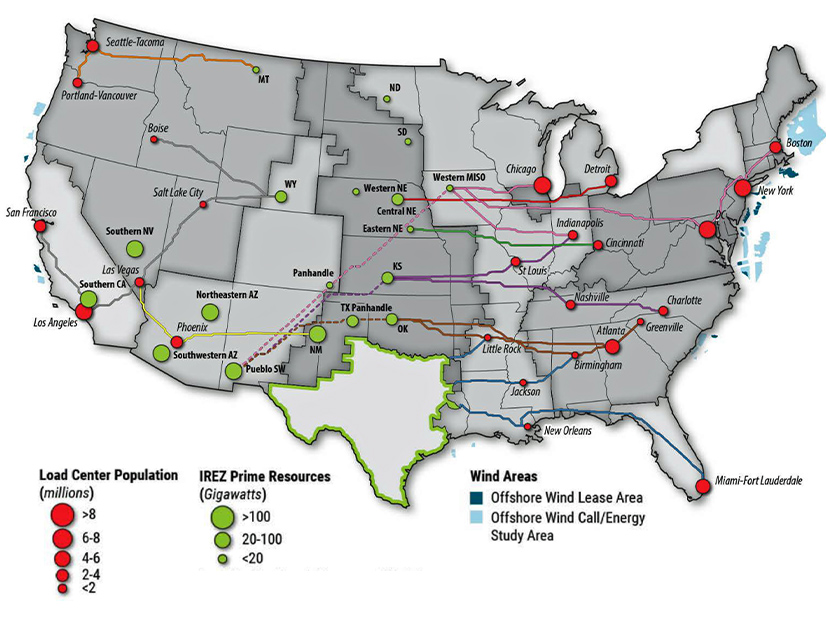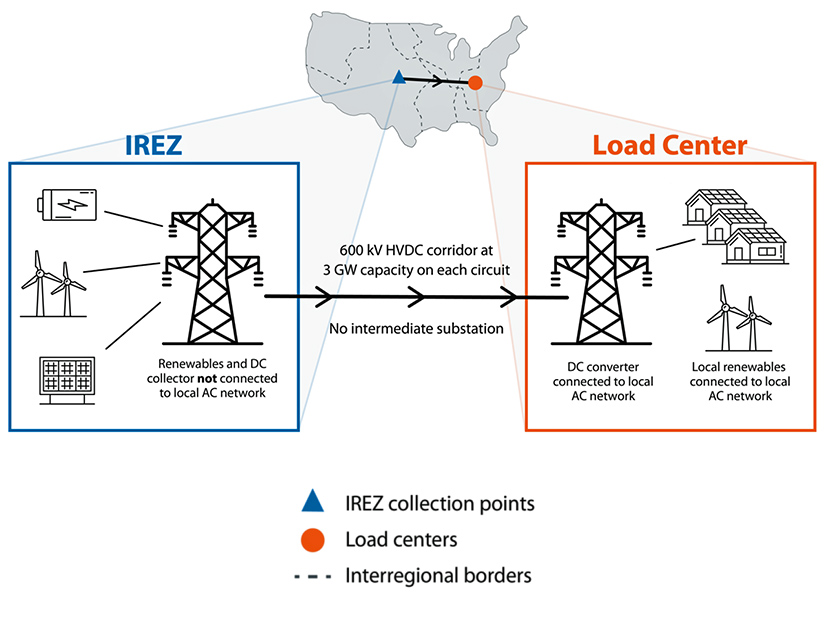
A new analysis concludes that building long-distance high-voltage transmission would save money and speed decarbonization of the U.S. power grid.
The National Renewable Energy Laboratory report on interregional renewable energy zones (IREZ) issued March 7 is the first of several companion reports for the National Transmission Planning Study, targeted for release later this year.
The IREZ concept would link the highest concentrations of the lowest-cost renewable energy potential with the highest concentrations of need for that power by building new transmission lines stretching hundreds of miles.
The value of interregional transmission has been well established as the nation shifts to a more intermittent power generation profile. The challenges of building it also are well known.
For starters, state-level review of transmission proposals often focuses heavily on needs and benefits within that state, rather than the region or nation. Then there are multiple federal permits, local authorizations and other state approvals to secure, plus willing cooperation of states with each other and in some cases, the approval of tribal nations.
FERC flagged these and other barriers to siting long-distance high-voltage transmission — as well as opportunities — in a 2020 report to Congress. The Brattle Group offered its take in 2021.
In announcing the new report, NREL acknowledged the importance of multistate cooperation to make the IREZ concept work.
Lead author David Hurlbut, an NREL researcher, said the IREZ report is intended to make it easier for states to answer the questions that arise in their regulatory processes.
“Long-distance transmission between planning regions was always harder to get through the approval process than new lines within the same region,” he said. “But over the past few years, the power sector has been changing in ways that might make interregional transmission a more compelling option than it used to be.”
The report could also inform tribal nations that will be part of the decision-making process when their lands are included in IREZs.
The report’s authors wrote that the renewable energy zone concept originated in Texas two decades ago as wind power expanded in that state. Lessons learned from Texas’ experience helped guide the process, which yielded several high-value IREZ corridors.
The authors say these corridors could help reduce carbon emissions, improve resource adequacy and boost grid resilience with a relatively small impact on customers’ bills.
They are, the authors say, the “low-hanging fruit” in the clean energy transition, maximizing the value of commercially mature wind and IREZ solar technology and delivering that value to the customers who would pay for it.
The wind IREZ regions cited in the report are almost all in the Midwest and the solar IREZ regions are all in the Southwest, while the load centers are mostly hundreds or many hundreds of miles distant.
Subsequent analyses by states in a proposed corridor might lead to other configurations, but for the report, NREL analyzed the role of a 600-kV HVDC line with 3 GW of capacity in the resource mix. The authors also assumed that the best 15 GW of resource potential within the zone would compete for access to that 3-GW transmission hub.
Several of the IREZ corridors analyzed in the report align with those in the U.S. Department of Energy’s National Transmission Needs Study, issued last October, and the upcoming National Transmission Planning Study, as well as with projects under construction or in advanced permitting.
The Pacific Northwest National Laboratory contributed economic analysis to the IREZ report. It also is collaborating with NREL on the National Transmission Planning Study.



